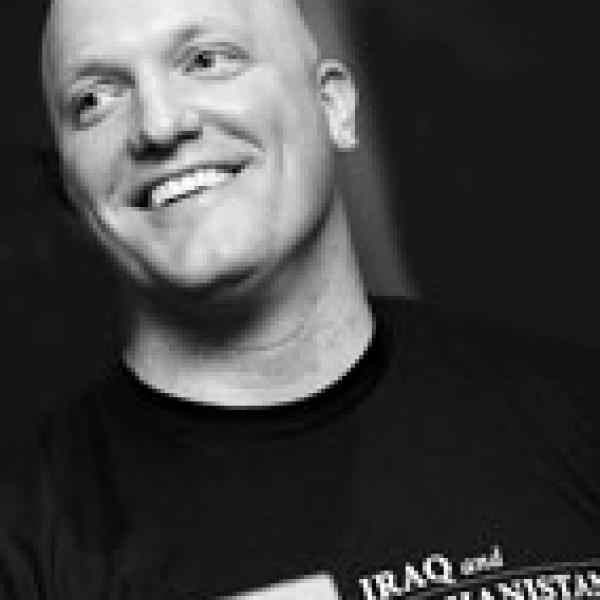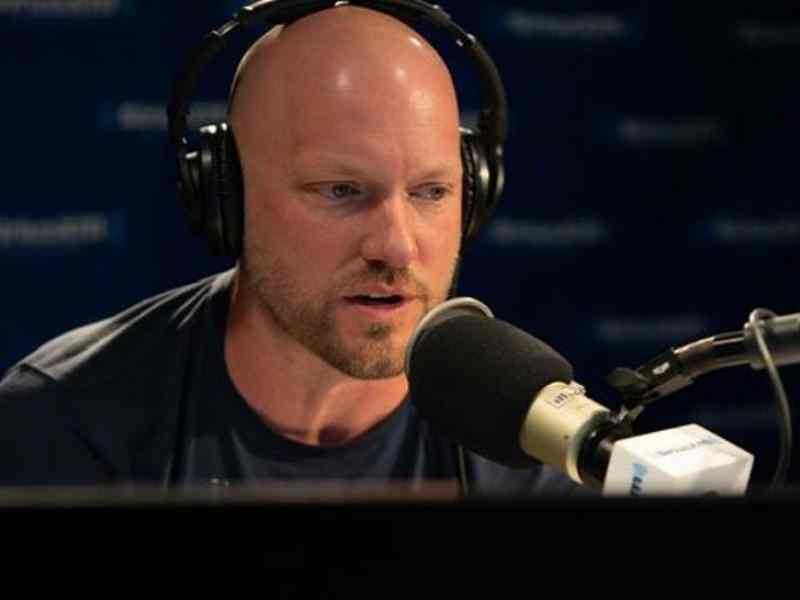Introduction
Paul Rieckhoff is building a new type of veterans organization to meet the needs of a new generation of returning soldiers, nurture their leadership potential, and transform the national conversation around veterans issues and combat.
The New Idea
Veteran services organizations have played an important role historically in protecting the interests of veterans, but the old politicized models are failing and have become irrelevant to new veterans. Furthermore, the Department of Veterans Affairs (VA), stymied by bureaucracy, has failed to efficiently respond to the needs of this population. Paul is building a twenty-first century, non-partisan veteran’s organization, using social media tools to organize and mobilize veterans of the wars in Iraq and Afghanistan and bridge the disconnect between veterans and the general population. In a time when less than 1 percent of the population serves in a volunteer military, most Americans have no personal connection to servicemembers or veterans. As a result, veterans often suffer the personal effects of combat in silence, and the country does not reap the benefit of their expertise on military and other issues. Through Iraq and Afghanistan Veterans of America (IAVA), Paul is changing this dynamic by equipping veterans in real time with information about resources they need to manage the transition back to civilian life and become leaders in their communities. He is also providing a non-partisan space for them to organize around veterans issues and building support among the general population for the community of veterans. The result is not just better care for veterans, but a population that is more thoughtful about future military conflicts because it better understands the causes and consequences of war.
The Problem
The veterans community suffers disproportionately from health and social problems. Approximately 20 percent of veterans from the wars in Iraq and Afghanistan have post traumatic stress disorder (PTSD) or serious depression. The same percentage are living with a traumatic brain injury. Additionally, suicide rates are increasing at an alarming rate. Among the remaining veterans of all U.S. wars, the VA estimates that 18 commit suicide each day. Among Iraq and Afghanistan veterans, at least 254 had committed suicide by 2006, on top of 230 suicides committed while still in Iraq or Afghanistan. Furthermore, unemployment among new veterans exceeded 11 percent in 2009, and more than 3,700 Iraq and Afghanistan veterans have already sought help from the VA homeless outreach program.
Soldiers and veterans are not the only ones who suffer the effects of combat. Nearly 2 million children have been affected by Iraq or Afghanistan deployments, and over half of military spouses report increased fear, anxiety, and behavioral problems among their children. Additionally, divorce rates among female veterans are significantly above the national average.
Few veterans are receiving the help they need in the face of these problems. Only 25 percent of veterans with PTSD or depression have received adequate treatment. Only half of veterans with PTSD or depression even sought care due to a strong mental health stigma in the military. In addition, many veterans and reservists are not promptly receiving the benefits to which they are entitled. The VA is notoriously slow in processing benefits claims, forcing many veterans to go into debt while they await their payments.
Historically, veteran services organizations (VSOs) like the American Legion and Veterans of Foreign Wars (VFW) have assisted veterans in the transition back to civilian life and sought to promote veteran interests. But the models are failing, and new veterans are not finding what they need at these institutions. First, these VSOs are funded in large measure by membership dues, and as World War II veterans die, revenue is falling rapidly. These organizations have operated through physical chapter buildings around the country, which they can no longer afford. Second, over time, these organizations developed a political bias, largely becoming conservative interest groups. This positioning does not resonate with all new veterans, and most veterans, especially those still enlisted, are reluctant to get involved in partisan politics. Third, VFW and American Legion halls are largely populated by aging white veterans from World War II, creating an environment where many of today’s young veterans, particularly women and minorities, do not feel comfortable. Furthermore, today’s veterans often find these organizations irrelevant to them, as the wars in Iraq and Afghanistan are different than past wars, and the existing VSOs are not responding to the unique issues faced by the new veterans.
Among other differences, the new veterans are a much smaller percentage of the population and have served in an exclusively volunteer military. As a result, most Americans have no direct relationship with a servicemember or veteran, and thus do not have experience with the personal aftermath of combat, but rely on the media for all of their information about the war. Additionally, today’s veterans have been subject to a different structure of multiple short deployments, as opposed to one long tour of duty, which creates different psychological issues. Finally, these new veterans are part of the social media generation, which communicates in very different ways than previous generations, using the Internet as their main source of information, networking, and communication.
Returning from Iraq, himself, Paul was shocked by the lack of relevant and effective support for him and his fellow soldiers, as well as the disconnect between what he had experienced and what the general population knew about the war. He set out to modernize veterans services, creating a new model for a new generation that would change not only the experience of this group of veterans but would change how the U.S. supported its veterans and approached war for generations to come.
The Strategy
IAVA uses social media tools toward three objectives: Community-building among Iraq and Afghanistan veterans to share information and facilitate access to resources, education of the American public about veterans issues, and targeted, non-partisan advocacy for policies that will significantly impact the lives of veterans.
IAVA is redefining veterans services through an interactive online community of veterans that replaces the old bricks and mortar VSO model. At less than 1 percent of the population, veterans of Iraq and Afghanistan often do not live in close proximity to a critical mass of other veterans. Because these veterans are isolated from their peers, the local VFW or American Legion hall is an unworkable model. Instead, IAVA has created an online version of these gathering places, responding both to the isolation problem and this generation’s affinity for online social networking. In this exclusive online community, Iraq and Afghanistan veterans have a safe space in which to wrestle with the issues they face and seek the advice and support of their peers who are experiencing the same problems. Through forums on the various health and social issues that veterans face, the community serves to break down the stigma attached to many of these issues and encourage people to seek help.
Furthermore, by creating a free exchange of information among veterans, the community allows veterans to answer questions and access resources in a significantly more efficient way than if they had to contact the VA and wait for a response. Beyond the exchange within the online community, IAVA can rapidly disseminate information to its members. With a two-minute video that explains how to access a particular benefit, IAVA immediately equips veterans with clear information that it might otherwise have taken them a lot of time and effort to acquire and understand. In effect, IAVA is doing the VA’s job much more cost-effectively, and in so doing, is forcing the VA to improve its outreach. And in contrast to old VSO models, which largely consisted of direct services, such as handing out blankets to homeless vets, IAVA has made veterans services about equipping and empowering veterans with the information and resources they need to realize their full civilian potential.
IAVA is also rebranding veterans in the public eye by using the media and popular culture to educate large audiences about veterans. In the wake of Vietnam, veterans returned home to an unwelcoming environment, as the public directed their anger about the war toward those who had fought it. As a result, Vietnam veterans suffered tremendously, and the image of the homeless Vietnam veteran, invoking simultaneously sympathy and disdain, remains strong in the collective memory of the current American population. By facilitating veterans to become leaders in government, business, and the citizen sector, and by marketing that image to the general public, IAVA is pre-empting the victim perception and mobilizing public support for this community to reach its potential. Paul has strategically built a constant media and popular culture presence, which positions IAVA as a source of non-partisan information about the wars in Iraq and Afghanistan and a voice of the people who are fighting them. By educating the public about veterans issues, Paul aims to both build support for veterans and seed a more accurate and thoughtful national conversation around issues of military conflict.
Finally, IAVA leverages its community and media presence to push major policy initiatives through Washington. Among other legislative victories, IAVA has helped push through a new GI bill, which will allow thousands of veterans to go to college, retroactive stop-loss payments, which will ensure payment for the involuntary extension of servicemembers’ terms of service, and mandatory, confidential mental health screenings for every servicemember returning from combat.
IAVA currently has 46,000 Iraq and Afghanistan veteran members—and twice as many other supporters—and continues to grow. Through a multi-year partnership with the Ad Council, IAVA has launched a public service advertising campaign directing returning servicemembers to the IAVA website and online community for support. In five years, Paul expects to have 175,000 veteran members and an additional 400,000 supporters. The online social network, new this year, has already drawn in 3,000 members. In 2010, IAVA will pilot a local organizing structure to support and organize veterans locally in different geographic areas, merging the face-to-face element of the old VSO models with IAVA’s modern social media approach.
The Person
When Paul graduated from college, he was looking for a challenge, something tough that would teach him to be a leader. After considering both the Peace Corps and the military, Paul decided to join the Army Reserves. Needing to make money to help pay for health care for his mother, he then took a job on Wall Street. He had just left his Wall Street job on September 7, 2001, to pursue further military education, when the terrorist attacks of September 11th happened. That morning, he joined the volunteers assisting the rescue effort at the World Trade Towers. Eight months later, after additional military training, he volunteered for active duty, and in early 2003, he was deployed to Iraq, where he served in combat operations for a year and learned to “leave no man behind.”
Although the 38 members of Paul’s platoon returned alive, almost all of them struggled to transition back to civilian life. Many suffered from PTSD, six of them got divorced, and one lived at Walter Reed Medical Facility because he had lost both legs. Paul was shocked that there was so little support for those who had risked their lives for a misguided war and that there seemed to be a great disconnect between the national conversation about the war and what he and his fellow soldiers had experienced. He created an initiative called Operation Truth to try to change the conversation, but soon realized that what mattered more than whether the war was right or wrong was the lives of the individuals who were fighting it. Operation Truth became IAVA and took a fiercely non-partisan stance to improve the lives of veterans.

 Tile image
Tile image